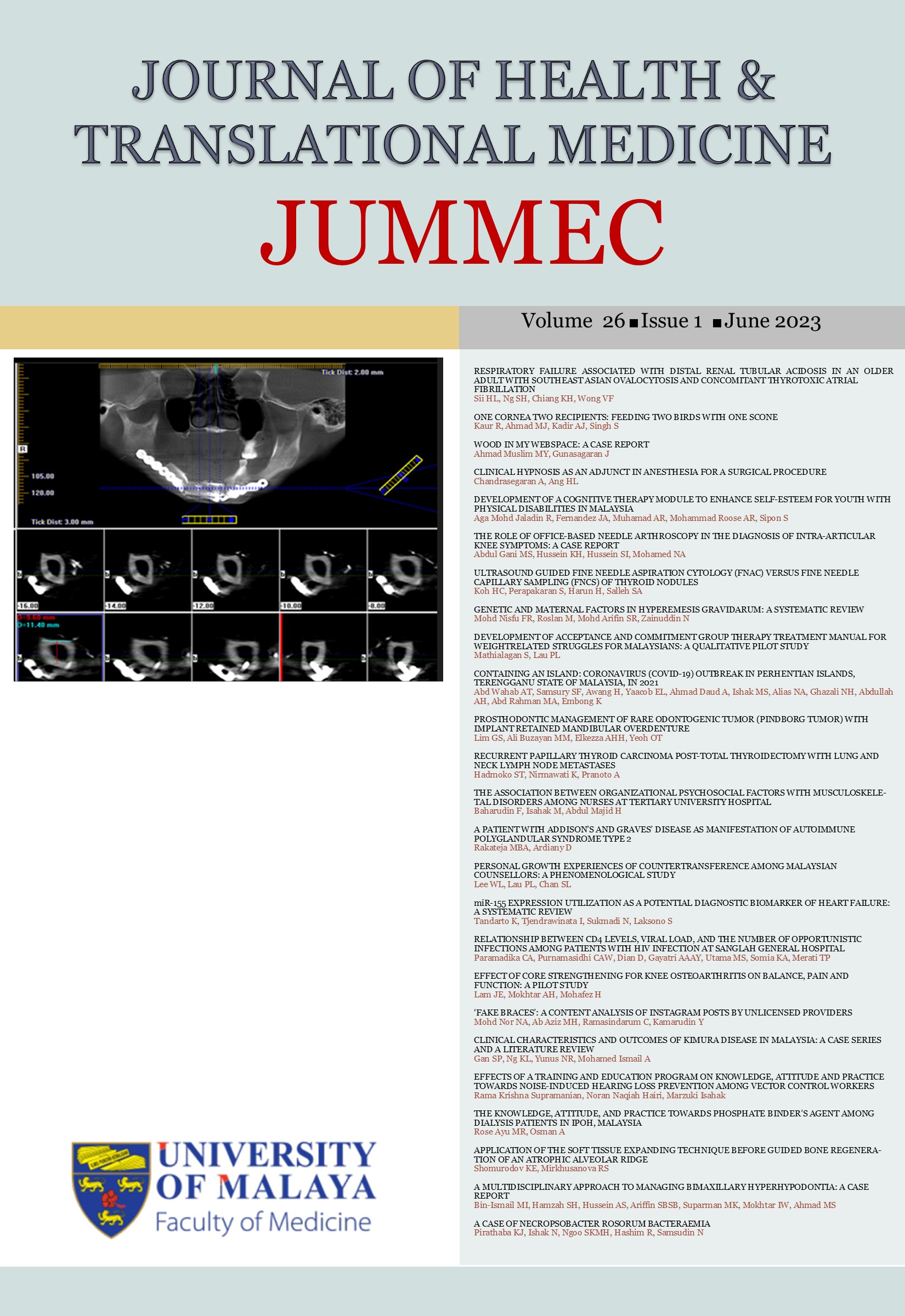GENETIC AND MATERNAL FACTORS IN HYPEREMESIS GRAVIDARUM: A SYSTEMATIC REVIEW
Received 2022-02-03; Accepted 2022-06-14; Published 2023-02-12
DOI:
https://doi.org/10.22452/jummec.vol26no1.8Abstract
Hyperemesis gravidarum (HG) is the severe form of nausea and vomiting during pregnancy, which can extremely lead to dehydration, significant weight loss, electrolyte and metabolic imbalances. Importantly, early identification of HG symptoms can help to reduce the severity and prevent complications. Although HG is associated with many adverse maternal and fetal outcomes, there is limited understanding about the risk factors. This review provides current data of genetic and maternal factors that are linked to HG. All observational studies published in English that investigated the genetic or maternal factors associated with HG from 2011 until 2021 were systematically searched using PubMed, Scopus, and ProQuest electronic databases. A total of 1462 citation titles was identified, of which 47 potentially relevant abstracts were screened. Of those, 15 studies met the inclusion and exclusion criteria. The genetic variants in ryanodine receptor 2 gene (RYR2), growth differentiation factor-15 gene (GDF15), and protein coding insulin-like growth factor-binding protein 7 (IGFBP7) were found to be associated with HG. On the other hand, several potential maternal factors contributing to the onset of HG were age, Helicobacter pylori infection, body mass index status, a history of HG in a previous pregnancy, high serotonin levels, and reproductive factors. In view of the lack of strength of overall evidence for risk factors related to HG, it is first imperative to establish a precise definition for HG in a diverse study population. Nevertheless, to conclude, this review was able to provide current data of genetic and maternal factors that are associated with HG.
Downloads
Downloads
Published
Issue
Section
License
All authors agree that the article, if editorially accepted for publication, shall be licensed under the Creative Commons Attribution License 4.0 to allow others to freely access, copy and use research provided the author is correctly attributed, unless otherwise stated. All articles are available online without charge or other barriers to access. However, anyone wishing to reproduce large quantities of an article (250+) should inform the publisher. Any opinion expressed in the articles are those of the authors and do not reflect that of the University of Malaya, 50603 Kuala Lumpur, Malaysia.


